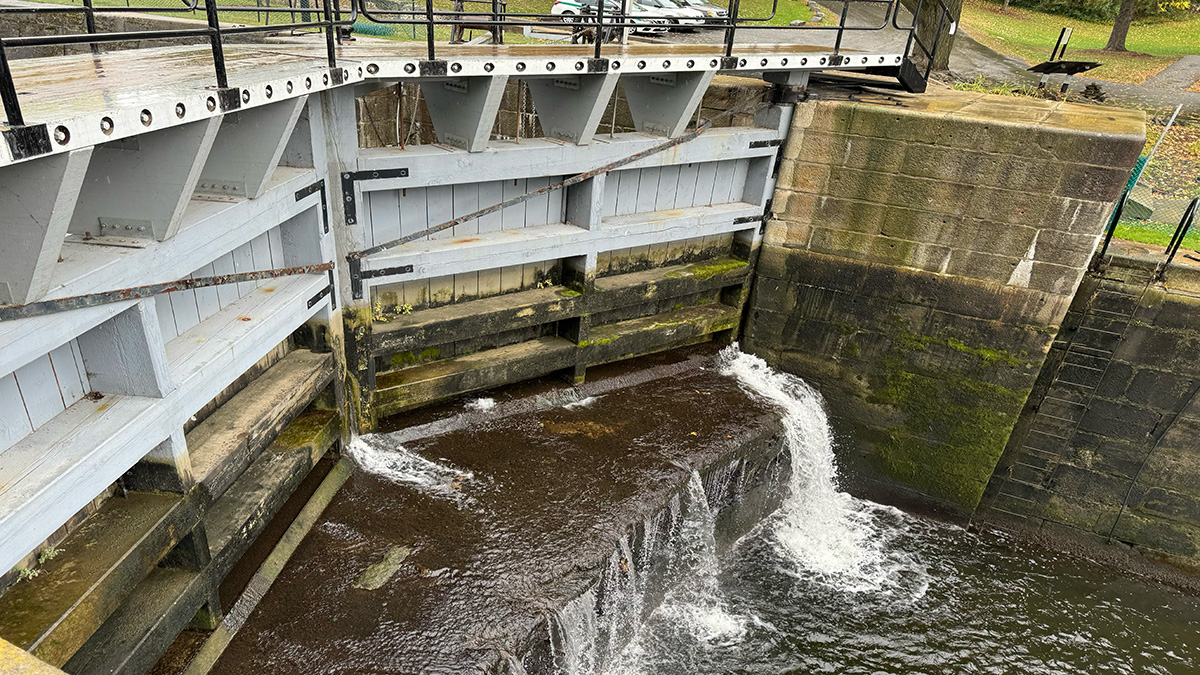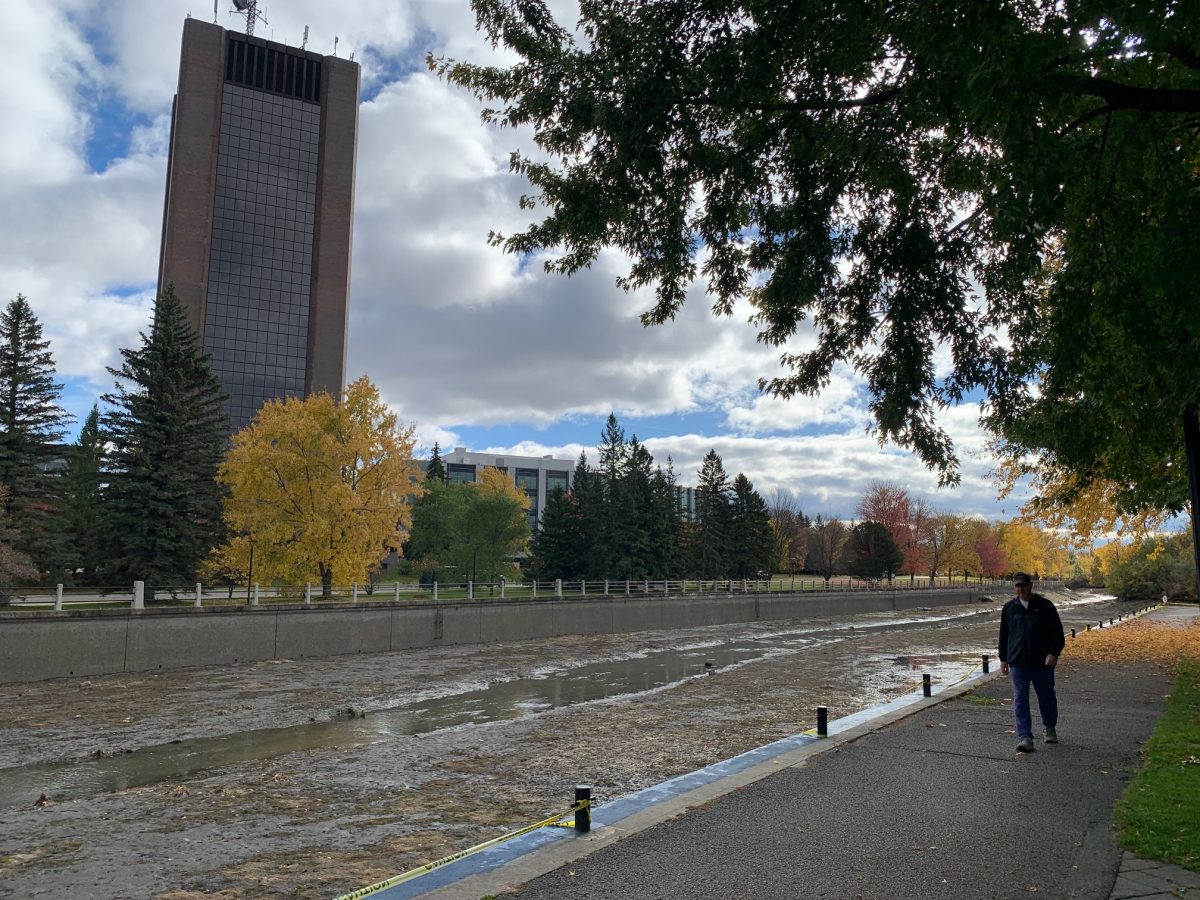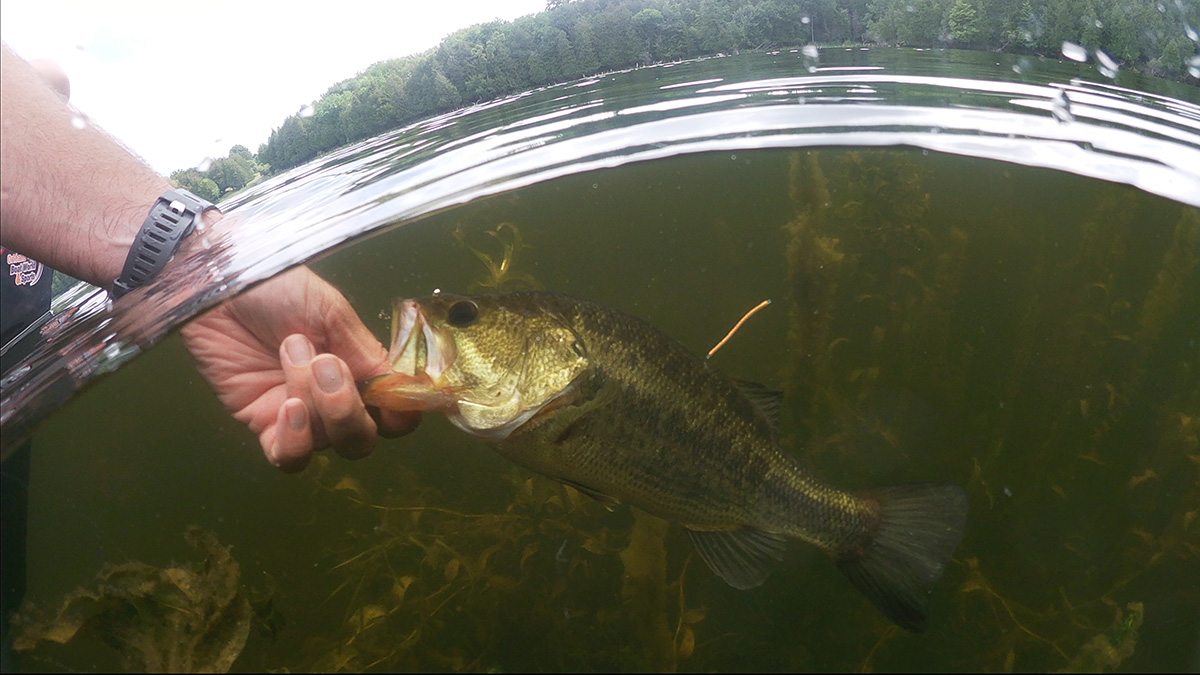On the day after Thanksgiving, Parks Canada began to drain the Rideau Canal, which it does annually to get the waterway ready to become the world’s largest skating rink and to prevent flooding from snow melt in spring.
The water levels differ from section to section and usually remain at their lowest from early November until mid-month, when some areas are adjusted to prepare for the skateway.
But what happens to fish when their habitat is drained?
Some die. Others adjust quickly and move to deeper areas. But one researcher worries declining levels of muskellunge in the Rideau waterway, which stretches from Ottawa to Kingston, may be linked to this annual drainage.
Jordanna Bergman, a conservation scientist who co-authored a study on the impact of winter drawdowns on muskies in the Rideau waterway, said that altering water levels may interfere with the spawning of these fish.
Bergman says, however, there is not enough research to definitively link the muskie population decline to the drawdowns. The impact of invasive species and poor water quality are also potential factors.
“We know that muskies are declining in [the Rideau waterway], but we don’t know why,” said Bergman. “There’s just so many other issues in the waterway.”
When Parks Canada drains the Canal in the fall, most sections are not fully “de-watered,” said Dr. Steven Cooke, a biology professor at Carleton University and co-author of the study.
The water level in most areas is lowered from two to five metres, leaving enough water for most fish to get around, he said. Then in mid-November, the sections of the Rideau Canal Skateway — between Hartwells and Ottawa lock stations — are raised a metre to create proper ice conditions for skating.
Other shallower stretches are drained to “a trickle” of water, said Cooke, such as the sections between Hog’s Back and Hartwells locks and the section between Black Rapids and Long Island locks, referred to as “Eccolands Reach.”
Map shows the Rideau Canal lock stations and lakes in relation to fish movement.
He says fish usually move to deeper water when this happens, such as Dow’s Lake or, in the other direction, Big Rideau Lake.
“Fish are pretty good at sensing changes in water level and adjusting accordingly,” said Cooke.
Lock systems use watertight chambers to raise and lower boats to different water levels, by filling the chambers with water or emptying them.

Eccolands Reach is the section of the waterway that Bergman and Cooke studied in the winters of 2020-21 and 2021-22, alongside hydraulic engineers, Parks Canada and Muskies Canada Inc., an angling club with an interest in conservation.
They tracked fish using acoustic telemetry, a system where acoustic tags that ping every 20 seconds are implanted in the fish. When a fish swims by an acoustic receiver at the bottom of the river, it receives the “ping,” allowing researchers to track the movement of these fish.
Bergman says researchers found that most fish stayed in deeper water through winter. Some fish were stuck in these sections until rainfall and currents from connecting rivers provided enough water in the spring to escape.
“You could see [the fish] trying to get out of this little section of river, and it just couldn’t get out until the water levels came up,” said Bergman. “By mid-April, it was able to scoot out and move to wherever it wanted to go.”
By this time, it’s usually spawning season for muskies and other fish populations, as they typically reproduce two weeks after ice melt, said Bergman, which may pose a problem.
The ideal spawning spot for muskies is in shallow, weedy water, called littoral habitats. The study found that Parks Canada doesn’t begin to raise the water level of Eccolands Reach until early May. This means muskies don’t have much access to these littoral habitats during their spawning season because the water level is still low.
“By the time Parks Canada brings the water levels back up in May, their spawning season is pretty much over which means that the fish just kind of have to make do with what they’ve got,” said Bergman.
On top of this, vegetation in some littoral habitats ends up dying because of the drawdown, said Bergman. When the water level drops, some of shallow sections are drained of water, destroying the plants that muskies like to scatter their eggs in.
Another barrier is the lack of ice melt, which naturally happens in the spring. But in the Rideau waterway, Parks Canada manages the floods to minimize harm to nearby homes and the Canal infrastructure itself.
Cooke says spring flooding would happen every other spring if Parks Canada were not involved. Flooding, while a menace to humans, would benefit fish populations.

Flooding changes the temperature and the flow of the water, which signals to fish that it’s time to spawn, said Bergman.
“Spring floods happening at the right time … is really important to make sure fish are being given the cues that they need to successfully spawn,” she said. Some rivers that connect to certain parts of the waterway are able to provide these cues to fish. “It’s just not a true spring flood that would naturally happen,” said Bergman.
She also said spring flooding is important to bring water levels up to provide more habitat adding some areas gain six more feet of water in the spring.
Bergman says Parks Canada knows about the drawdown effects on muskie spawning, but hasn’t altered the re-filling timeline because of the harm flooding could cause to human infrastructure.
While Parks Canada is mandated to protect species at risk, it also has an obligation to protect the historic value of the Rideau Canal and public safety.
The UNESCO World Heritage Site designation that the Rideau Canal carries does not list “natural heritage values” among the criteria that won global status, said Parks Canada spokesperson Haley Lang. Instead, the designation is for man-made ingenuity.
In a statement to Capital Current, Lang noted the water quality in the Canal is a shared responsibility between Parks Canada, the Ontario Ministry of the Environment (MNR), conservation authorities and the City of Ottawa. Water-level management falls to Parks Canada “in consultation” with MNR and takes into account spawning periods, flood mitigation, precipitation, topography and water flow rates, she said.
The October-November drawdown is responsible for some fish deaths, said Cooke. “There is some mortality in some years, but birds just slurp up the dead ones,” he said.
According to Cooke, a couple thousand fish usually end up dying each year when the Canal is drained if they can’t make it to deeper water in time.
He said the number of fish that die is very few compared to the number that live in the Rideau waterway and the amount each fish breeds every spring.
“On the surface, it might sound like a lot of fish, but it’s basically the reproductive output from a handful of fish,” he said.
He said the types of fish that are dying have “abundant” reproduction, such as sunfish, which might produce 2,000 fish in one nest. “Death in aquatic systems is the norm. That’s why they produce so many babies,” said Cooke.
Bergman said it’s tricky for Parks Canada to weigh the importance of protecting fish populations versus public safety. “If they have to pick and choose, they will definitely pick … public safety and well-being,” she said.
Parks Canada has to juggle between protecting human infrastructure and protecting fish species. In this case, the former is taking precedence.
“[The Rideau waterway] is a human altered system, no doubt about it, and … it’s managed jointly to create recreational activities, to maintain its historic value, and for biodiversity and resource management,” said Cooke.
“So all of those things sort of come together.”
Parks Canada says the public should report fish kills or strandings, as “vital” information to help both it and MNR monitor and protect fish populations.




